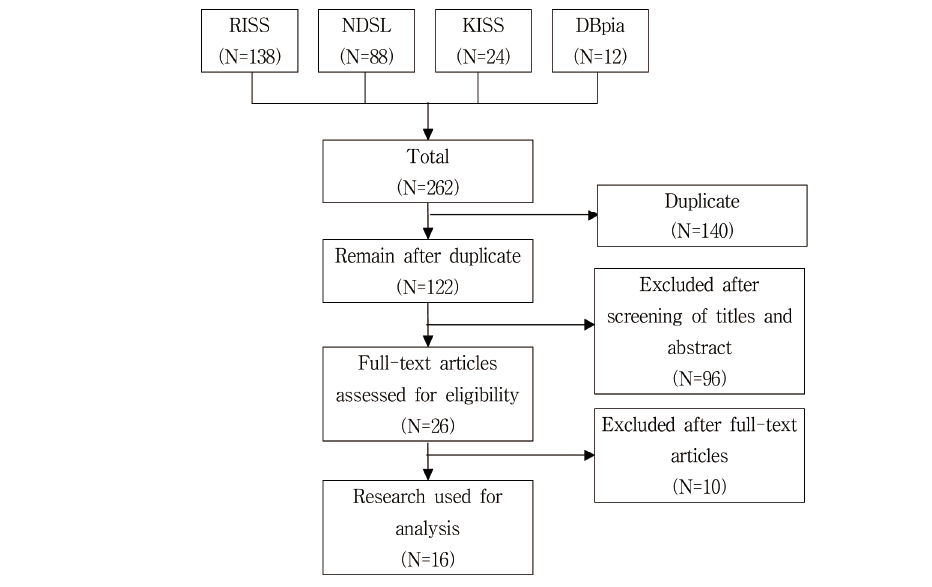Abstract
Objectives: This purpose of this study was to examine the trends in interventional research and analyze the contents and results of intervention through a systematic literature review of the domestic research literature, suggesting the effect of an oral care program on elementary school students. Methods: A total of 262 articles were retrieved initially, and the duplicate articles were then removed, excluded after screening titles, abstracts, and full-text articles. Finally, a total of 16 papers were used in the review. Results: The study included 9 articles with the nonequivalent control group pretest-posttest design and 7 with the one-group pretest-posttest design. All articles were of non-randomized studies. The most common index of the interventional effect was dental plaque. Further, oral health behaviors and knowledge, perception, self-efficacy, and DMFT index were common indices. In the quality assessment, in the “blinding of outcome assessment” among six items of ROBANS, 12 studies showed a high risk of bias. Conclusions: In order to develop an interventional oral health care program for elementary school students and evaluate the effectiveness, a strict research design and qualitative improvement of research reports are required, and continuous research should be conducted to develop a systematic protocol.
Figures & Tables

Fig. 1. Flowchart of studies included from database search


